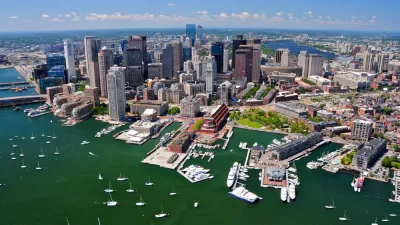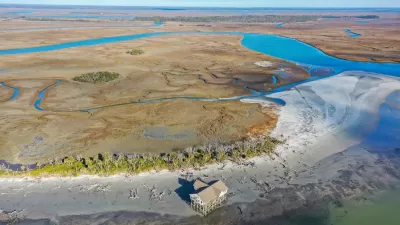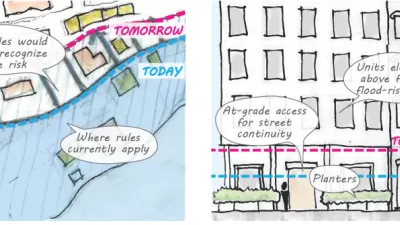The Financial District and Seaport Climate Resilience Master Plan will extend the shoreline in Lower Manhattan by up to 200 feet.

The Financial District and Seaport Climate Resilience Master Plan, a blueprint for comprehensive flood defense infrastructure to protect Lower Manhattan from the threats of climate change, was released to the public on December 29, 2021.
A press release from (now former) Mayor de Blasio, the New York City Economic Development Corporation (NYCEDC), and the Mayor's Office of Climate Resiliency (MOCR) announced the release of the climate resilience plan.
The climate resilience plan reimagines the shoreline of Lower Manhattan by creating a "multilevel waterfront that extends the shoreline of the East River by up to 200 feet from its existing location," according to the press release. The reimagined waterfront is intended to withstand severe coastal storms and rising sea levels while also creating new open space for public use when waters are calm. "The upper level will be elevated by about 15 to 18 feet to protect against severe storms like Sandy, while doubling as public open spaces with sweeping views of the city and harbor. The lower level will be a continuous waterfront esplanade, raised three to five feet to protect against sea level rise while connecting New Yorkers to the water's edge," adds the press release.
The plan comes with a projected price tag of somewhere between $5 billion and $7 billion.
News coverage of the new climate resilience master plan is available from New York City Patch and a paywalled article at Crain's New York Business.
FULL STORY: De Blasio Administration Releases Climate Resilience Plan for Financial District and Seaport

Alabama: Trump Terminates Settlements for Black Communities Harmed By Raw Sewage
Trump deemed the landmark civil rights agreement “illegal DEI and environmental justice policy.”

Planetizen Federal Action Tracker
A weekly monitor of how Trump’s orders and actions are impacting planners and planning in America.

Why Should We Subsidize Public Transportation?
Many public transit agencies face financial stress due to rising costs, declining fare revenue, and declining subsidies. Transit advocates must provide a strong business case for increasing public transit funding.

Understanding Road Diets
An explainer from Momentum highlights the advantages of reducing vehicle lanes in favor of more bike, transit, and pedestrian infrastructure.

New California Law Regulates Warehouse Pollution
A new law tightens building and emissions regulations for large distribution warehouses to mitigate air pollution and traffic in surrounding communities.

Phoenix Announces Opening Date for Light Rail Extension
The South Central extension will connect South Phoenix to downtown and other major hubs starting on June 7.
Urban Design for Planners 1: Software Tools
This six-course series explores essential urban design concepts using open source software and equips planners with the tools they need to participate fully in the urban design process.
Planning for Universal Design
Learn the tools for implementing Universal Design in planning regulations.
Caltrans
Smith Gee Studio
Institute for Housing and Urban Development Studies (IHS)
City of Grandview
Harvard GSD Executive Education
Toledo-Lucas County Plan Commissions
Salt Lake City
NYU Wagner Graduate School of Public Service





























